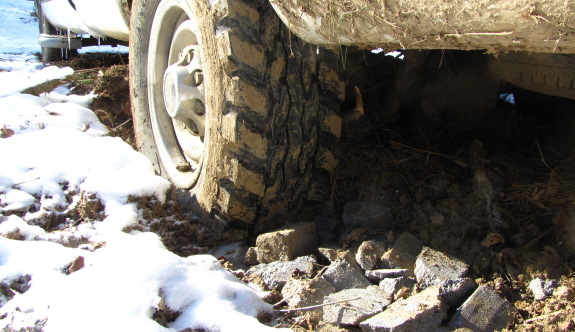
Sticky reflections

This is the 2nd time I've
managed to get the truck stuck in the mud this winter season.
Each time has been an
opportunity to help gauge the limitations of its traction.
I think getting stuck pushes
my "loss of power" buttons in the same way not knowing where
I'm at does.
The lesson I've been trying
to learn lately is to not get so bent out of shape when these dips in
power happen. My first instinct is to react in a way that solves the
problem in the easiest and quickest way possible, but my latest
findings seem to indicate that there is often an advantage to stepping
back and looking at a problem from a few different perspectives.
Want more in-depth information? Browse through our books.
Or explore more posts by date or by subject.
About us: Anna Hess and Mark Hamilton spent over a decade living self-sufficiently in the mountains of Virginia before moving north to start over from scratch in the foothills of Ohio. They've experimented with permaculture, no-till gardening, trailersteading, home-based microbusinesses and much more, writing about their adventures in both blogs and books.
Want to be notified when new comments are posted on this page? Click on the RSS button after you add a comment to subscribe to the comment feed, or simply check the box beside "email replies to me" while writing your comment.

Consider how a muddy road forms. If a path is ridden often, the topcover will erode away, leaving open soil. Add some water and you get mud.
So there are several possible answers;
If you have both clay and wood available, you could e.g. make bricks to cover the tracks.
Yeah, yeah. We know those are the long term solutions, but barring a month and a few thousand dollars to work on the driveway, we tend to just work with the weather and try to drive when the ground is frozen or dry.
Mark's been wearing away at me and stealing a few days a year to pour gravel into the driveway, so I figure in a decade or so, he'll have fixed it all up.